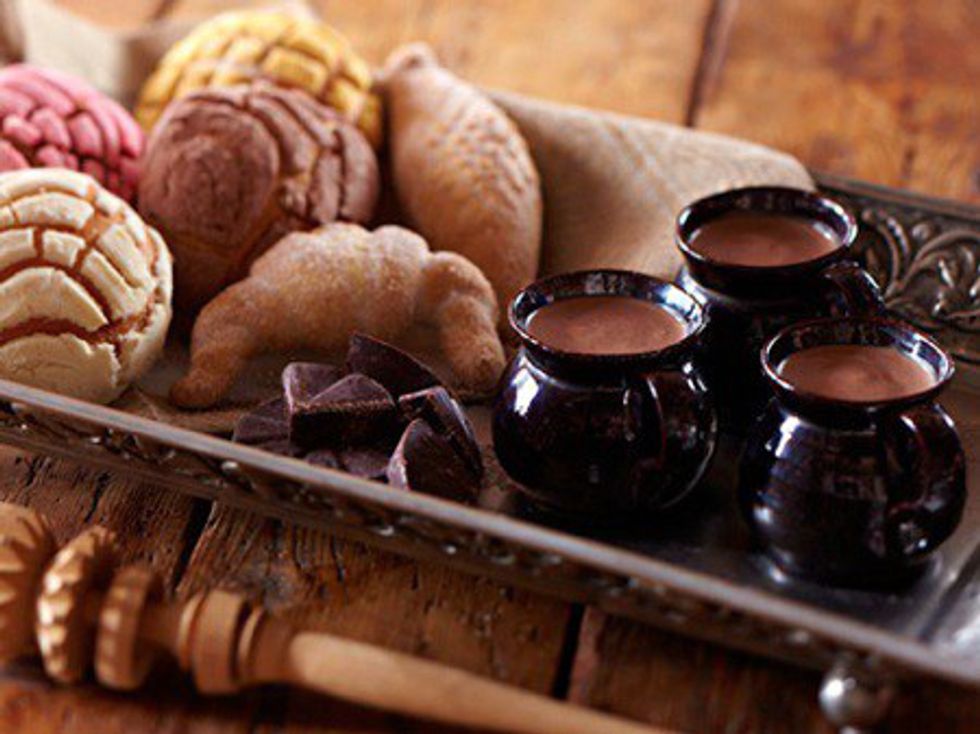Dishes
Some more well known dishes in the Mexican communities are enchilaldas, sopes, huaraches, chiles rellenos, andmole. These dishes deserve a whole article on themselves, but they are essentially the "step up" from tacos. These plates rely heavily on tortilla-type bases or wraps and use lots of meat, beans, lettuce, tomatoes, avocado, cheeses, and different kinds of salsas. These plates, among a few others, combine every kind of ingredient in Mexican cuisine, making the options almost limitless.
Mole by itself, on the otherhand, is something that is very basic and simple at its core idea. Mole is a mix of different chillis, chocolates, nuts, and fruits. The different kinds of mole range from sweet and spicy to strong, bitter and sour. The colors also range accordingly, to include many different kinds of red, brown, orange, green, and yellow sauces.
Soups
There are plenty of soups in Mexican culture, two of the more well-known being menudo and pozole. While menudo typically offers hominy, cilantro, oregano, chilli peppers, onions, and some optional lime and pork or beef.
Pozole is very similar, except for its infamous history. One of the harsh truths of Mexican cuisine is a reflection of one of the harsher truths of some Mexican cultures. Today, pozole is enjoyed by many, but in Aztec tradition, pozole had a particular ingredient that would shock and disgust pretty much anybody: human meat.
That’s right, cannibalism wasn’t rare in Aztec tradition and other parts of Mexico. Mostly a spiritual or warring-ritualistic tradition, there’s still plenty of evidence to show that some human element was common in several groups of Mexico.
But thankfully, for most people, cannibalism wasn’t commonplace and only documented to occur occasionally in a few cultures in Mexico. Regardless of its stance in ritual society, it's a practice centuries gone and left in the history books. But not to fear, we now return to pure, non-aggressive (and even vegan) foods.
Atole, champurrado, pan dulce, the list goes on and on. Mexican pan dulce, or sweet bread, varies in the hundreds of different kinds. Each pan dulce has its own unique style and flavor, with centuries of experimentation by native bakers (with help from Spanish trade of wheat) to create many kinds of colorful breads for all of us to enjoy.
And to drink we have atole and champurrado, or warm sweet drinks. These drinks go very well with pan dulce and other breads and consist of corn, pioncillo, cinnamon, vanilla, chocolate, and in some other varieties, different kinds of fruits. Atole and champurrado with pan dulce for breakfast is such a warming cultural experience, that it's fair to say that if you have yet tried some pan dulce with atole on a cold day... you're missing out on one of the core Mexican experiences. I recommend you try it as soon as you can.






















